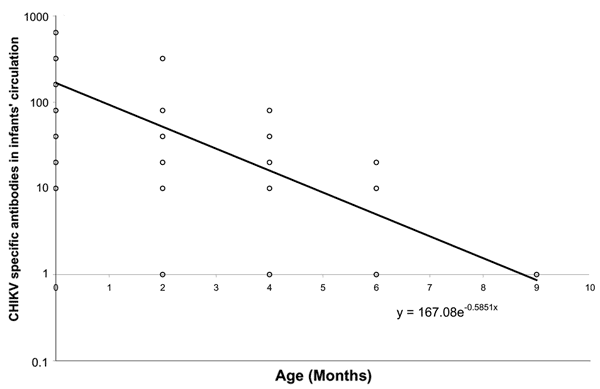Volume 12, Number 11—November 2006
Dispatch
Transplacental Chikungunya Virus Antibody Kinetics, Thailand
Figure 2

Figure 2. Half-life of maternal antibody to chikungunya virus (CHIKV). Each dot represents the titer at that given age; >1 participant can share the same dot. CHIKV hemagglutination-inhibition titers in infants' sera are plotted on a logarithmic scale, with the line of best fit calculated by exponential regression on a linear scale.
1These authors contributed equally to this article.
Page created: October 14, 2011
Page updated: October 14, 2011
Page reviewed: October 14, 2011
The conclusions, findings, and opinions expressed by authors contributing to this journal do not necessarily reflect the official position of the U.S. Department of Health and Human Services, the Public Health Service, the Centers for Disease Control and Prevention, or the authors' affiliated institutions. Use of trade names is for identification only and does not imply endorsement by any of the groups named above.